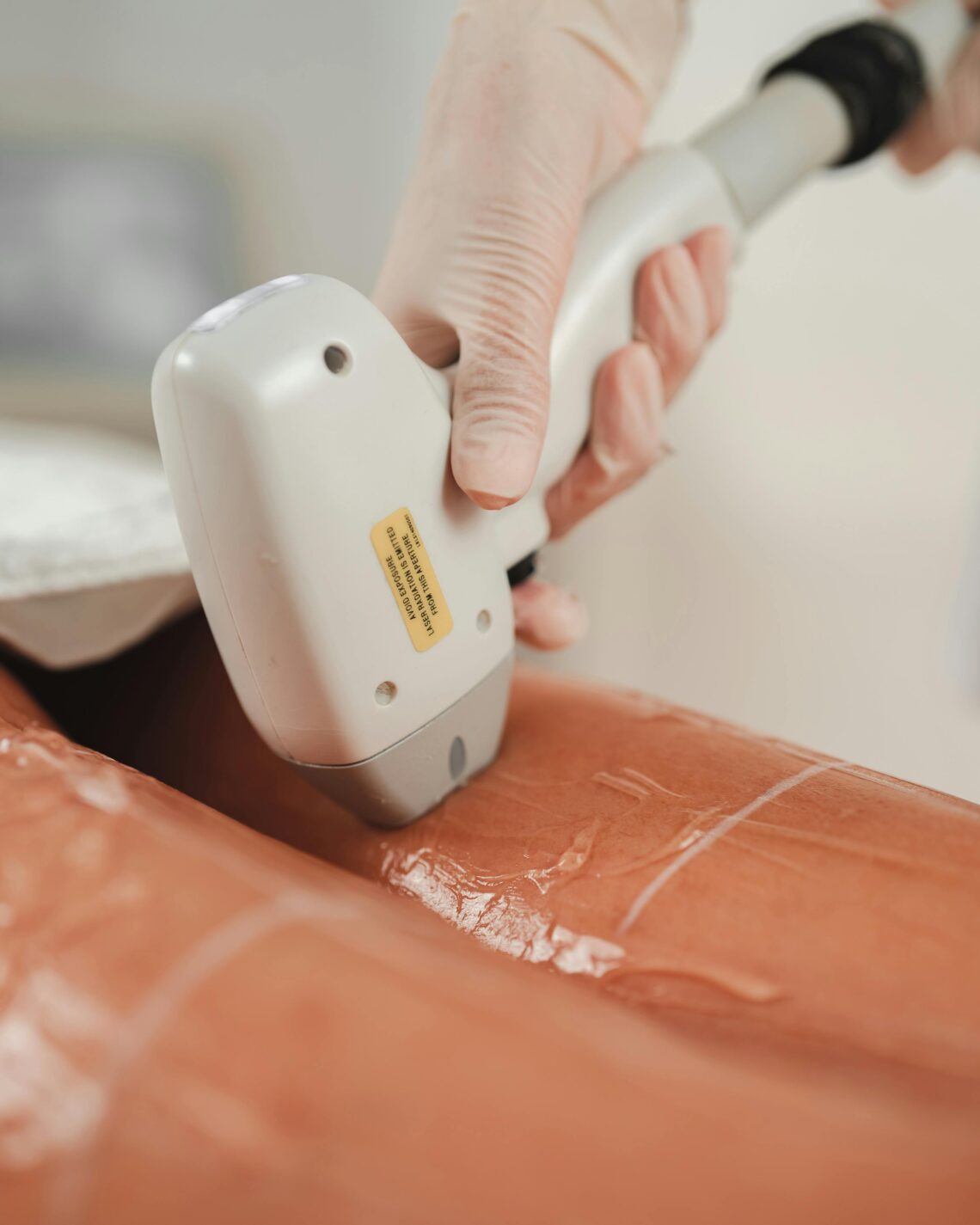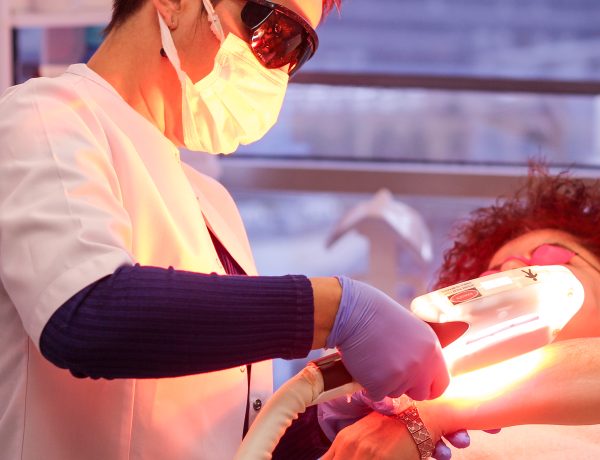Laser hair removal is the best solution for individuals who have had enough of the continuous waxing, shaving, and irritation of the skin associated with the conventional methods. It works by disabling hair follicles using light energy.
That is how you have smooth skin without any hassle and discomfort as provided with the more conventional approaches. So, how does this laser hair removal work, and what makes it effective?
This article will explain the scientific background of laser hair removal, the methods of treatment, and the most pertinent guidelines that an effective patient should follow.
How Does Laser Hair Removal Work?
Laser Hair Removal works on scientific principles to target and control hair growth. Here’s some in-depth science behind laser hair removal:
The Science Behind Laser Hair Removal
One fundamental principle that laser hair removal works upon is selective photothermolysis. This was built upon the belief that the exact wavelength of laser light was absorbed most readily by the melanin of the hair follicle.
It becomes absorbed by melanin and turns into heat, which destroys the follicle and makes it no longer capable of regrowing hair.
It does best during the anagen phase, which means the growth of hair. This means that hair grows in cycles, and more sessions will have to be completed in order to have it totally removed.
The varying laser types are used on people for hair removal purposes. The different lasers are appropriate for varying skin tones and the corresponding hair types. Here are some of the mentioned examples:
- Alexandrite Lasers: This is generally made for light skin tone as well as light-coloured hair. The lasers feature a longer wavelength accompanied by faster pulse rates.
- Diode Lasers: These lasers are very effective for a wide skin type range, especially for darker skins, and are versatile.
- Nd Lasers: Specifically, because of their wavelength that is more penetrative without affecting the surface Nd lasers are safer for people that have more melanin in their skin.
How do Hair and Skin Types Affect Laser Effectiveness?
The effectiveness of laser hair removal varies from person to person, based on his or her skin and hair types. Melanin is the major factor involved in determining success.
Darker hair contains a higher amount of melanin, which absorbs more energy from the laser, hence more successful treatments. Conversely, hair that is light in colour, such as blonde, red, or grey, tends to have less melanin, making it less likely to respond well to the laser treatment.
Darker skin shades are also amenable to this hair removal process, although special lasers have to be used in such cases because these lasers do not target the surrounding skin.
Results can also be affected by hair growth cycles. Hair grows, transforms, and rests in three phases: anagen, catagen, and telogen.
Since laser hair removal is best achieved when the hair is in anagen, doing it more than once with intervals between treatments sometimes proves necessary to treat all hair in this phase.
Only a qualified professional can tell which laser type is the best for individual skin and hair characteristics. Technicians usually conduct an initial consultation to assess these factors and develop a personalized treatment plan.
The Process of Laser Hair Removal
The laser hair removal process involves several important steps to ensure optimal results. Here’s a breakdown of each stage from preparation to recovery.
Preparation Before Treatment
Being ready for the procedure of laser hair removal is necessary for one to achieve the best results as well as staying away from the hazards of the procedure. Some of the key steps that must be taken before the appointment include:
- Avoid Sun Exposure: The skin, which is burnt due to tanning or sun exposure, is really difficult to recuperate. Try remaining indoors at any time within two weeks of the procedure.
- Avoid products containing active ingredients: Any containing retinoids or alpha-hydroxy acids are to be avoided a week before this procedure, as they tend to make the skin highly sensitive.
- Shave the Area: Shave the treatment area a day or two before in order to make the skin prepared for the laser. Waxing and plucking should be avoided because they remove the follicle entirely and are less efficient for the laser.
What to Expect During Treatment?
Some of the crucial moments that occur in the case of laser hair removal take place during:
- Protective Eyewear: Goggles for preventing unwanted leakage of laser light from reaching the client’s or the technician’s eyes are also available. It will be unsafe for a laser to enter any person’s eye.
- Cooling Measures: Most contemporary laser machines have cooling devices that assist in reducing the discomfort of the treatment. Even topical anaesthetic is sometimes applied by clinics before a session for added comfort.
- Pulses of Light: The laser device, handled by the technician, will pass over the entire treatment area, and each pulse of light emitted will cause a specific point of energy application and thus, enabling the targeting of hair bulbs. It is very similar to a rubber band snap against your skin, though. Many claim it does not hurt much at all, especially when compared with waxing.
Post-Treatment Care and Recovery
After the treatment, care is an essential factor to guarantee the best results in the form of the side effects, which will barely be noticeable. Here are the important steps to be followed after the procedure:
- Sun Avoidance: The area treated will be sensitive to the sun. It will be necessary to apply high-SPF sunscreen and avoid direct sun exposure for several weeks post-treatment to avoid discolouration and irritation.
- Mild products: Mild products containing active ingredients should be avoided for at least 48 hours following treatment, in order not to interfere with the skin as it heals. Slightly more potent moisturizing can be done to ensure proper hydration.
- Stay Cool: Avoid hot showers, saunas, or vigorous exercise the first few days after treatment. Heat will make whatever irritation or sensitivity you develop in the area worse.
- Moisturize: Keeping the area moisturized with a mild lotion does help soothe the skin and promote healing. People often recommend aloe vera or chamomile-laden products because of the soothing properties they possess.
Conclusion
Laser hair removal is very convenient and permanent for any unwanted hair. It assists people in removing the stress of daily grooming. Along with technological improvement, the method is being made to be more accessible and efficient for different hair and skin types.
With knowledge of how it works and following proper care, individuals confidently have smoother skin and appreciate the benefits of reduced maintenance time and improved comfort.
Read more beauty articles at ClichéMag.com
Images provided by Deposit Photos, BingAI, Adobe Stock, Unsplash, Pexels, Pixabay & Creative Commons



